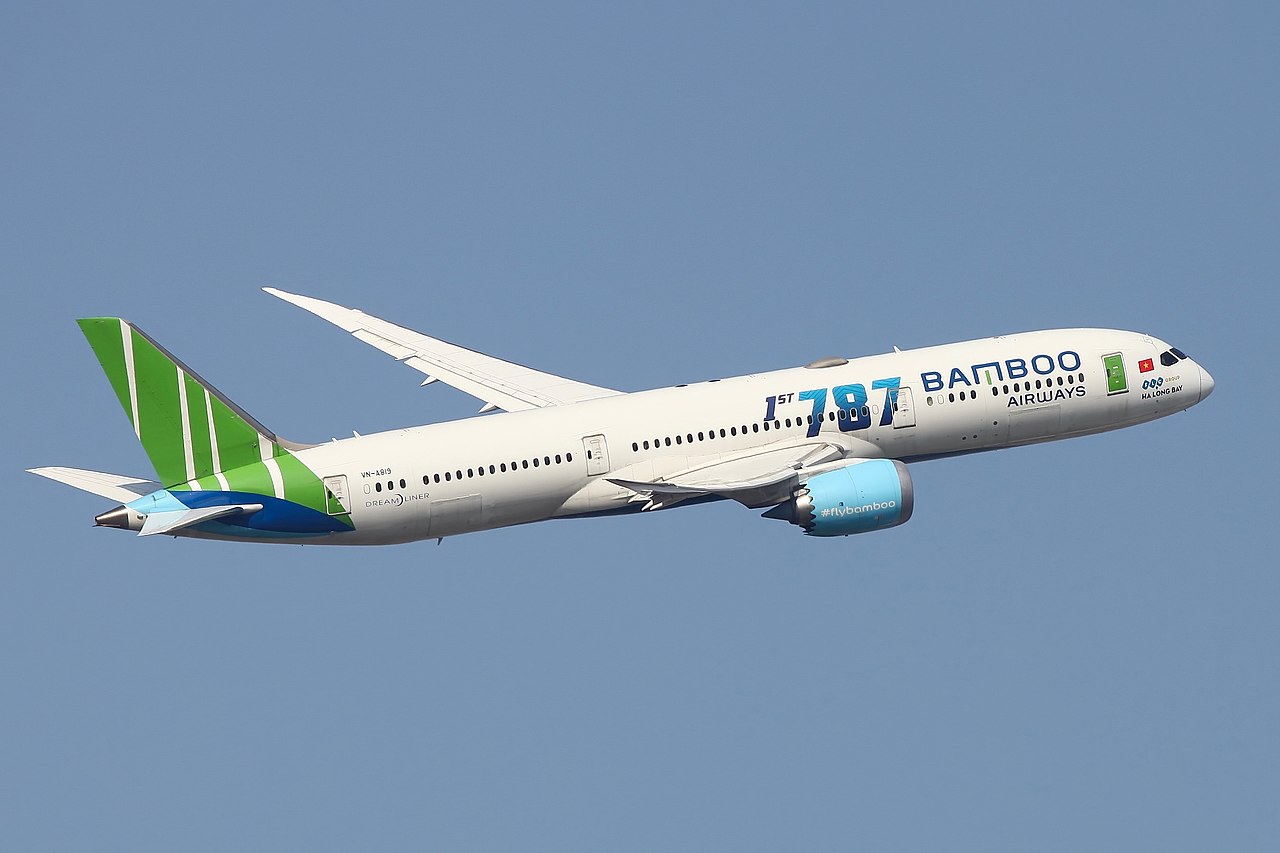Summary:
- Bamboo Airways, the Vietnamese carrier facing restructuring, has unveiled plans to divest its Boeing 787 fleet and cease its long-haul flight operations, signaling a significant shift in its strategy.
- The airline has already removed long-haul routes to Frankfurt, London, Melbourne, and Sydney from its website booking section. Bamboo Airways now exclusively operates international routes to Bangkok, Seoul, Taipei, and Tokyo.
- As part of its restructuring efforts, Bamboo Airways will introduce narrowbody aircraft, concentrating on select Southeast Asian destinations and domestic routes connecting Da Nang, Hanoi, and Ho Chi Minh City. The company aims to enhance operational efficiency and sustainability.
HANOI — In the midst of a complex restructuring process, Vietnam's Bamboo Airways has revealed its intention to divest its Boeing 787 fleet and discontinue its long-haul flight operations. This strategic shift represents a significant transformation for the embattled carrier.
Long-Haul Routes Removed
Signs of the transformation have already surfaced, with Bamboo Airways removing long-haul routes to major cities like Frankfurt, London, Melbourne, and Sydney from the booking section of its website. Currently, the airline's international network is confined to destinations in Asia, including Bangkok, Seoul, Taipei, and Tokyo.
Focus on Efficiency and Expansion
Bamboo Airways shared its restructuring approach through an official statement on October 23. While not explicitly mentioning the withdrawal of long-haul routes, the airline highlighted its efforts to enhance "commercial efficiency by reducing the frequency of a number of inefficient routes with low passenger demand while increasing operation on routes recording high demand." Furthermore, Bamboo Airways intends to introduce narrowbody aircraft to concentrate on specific Southeast Asian destinations and domestic trunk routes connecting Da Nang, Hanoi, and Ho Chi Minh City. The carrier aims to standardize aircraft configurations, reduce fuel consumption, and protect the environment as part of its transformation.
Proactive Preparations for the Future
The airline also emphasized that it has been actively engaged in discussions and negotiations with partners to redesign its structure, focusing on economic priorities and sustainable practices. It will work closely with aircraft manufacturers Boeing and Airbus to implement previously agreed-upon aircraft purchase agreements. Bamboo Airways is proactively preparing for a fleet expansion from 2024 onwards.
Fleet and Operational Overview
According to the Aviation Week Network Fleet Discovery database, Bamboo Airways currently operates a fleet comprising two Boeing 787-9s, 15 Airbus A320-family aircraft, and three Embraer E190-E1s. Notably, the Boeing 787s are leased from the China Aircraft Leasing Company. Additionally, the airline has ten Boeing 787-9s on order as part of an agreement made in 2019.
Impact on Long-Haul and International Market Share
Before the disruptions caused by the pandemic, Bamboo Airways and Vietnam Airlines were the primary carriers connecting Australia to Vietnam. However, the entry of low-cost carrier Vietjet with its Airbus A330-300 altered the landscape. Recent data indicates a considerable shift, with Bamboo Airways' seat share to Australia dropping from 29.1% to 11.6% year-over-year as of October 23, 2023, according to CAPA – Centre for Aviation and OAG Schedules Analyser data. The airline also faced challenges on European routes, particularly to Frankfurt, where it held a 24.2% seat share, with the majority claimed by Vietnam Airlines.

